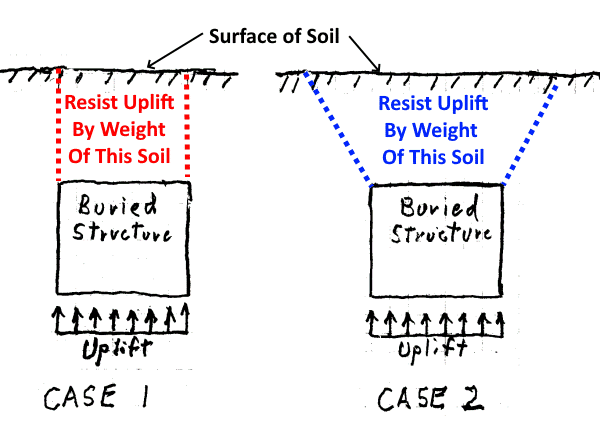Hi,
The weight of backfill helps the foundation to resist uplift. Conservatively, we could take only the part, that is contained in a prism, directly over the base area, e.g. F_bf = γ_bf*h_bf*A_f.

However, I think that due to the angle of internal friction φ, some neighboring layers would be also engaged. So, instead of prism, it is more likely to have something like inverted frustum.(Please turn the picture bellow upside-down

Is it allowed to account for the internal friction when calculating uplift and how much? What is the practice in your country?
The weight of backfill helps the foundation to resist uplift. Conservatively, we could take only the part, that is contained in a prism, directly over the base area, e.g. F_bf = γ_bf*h_bf*A_f.

However, I think that due to the angle of internal friction φ, some neighboring layers would be also engaged. So, instead of prism, it is more likely to have something like inverted frustum.(Please turn the picture bellow upside-down

Is it allowed to account for the internal friction when calculating uplift and how much? What is the practice in your country?


